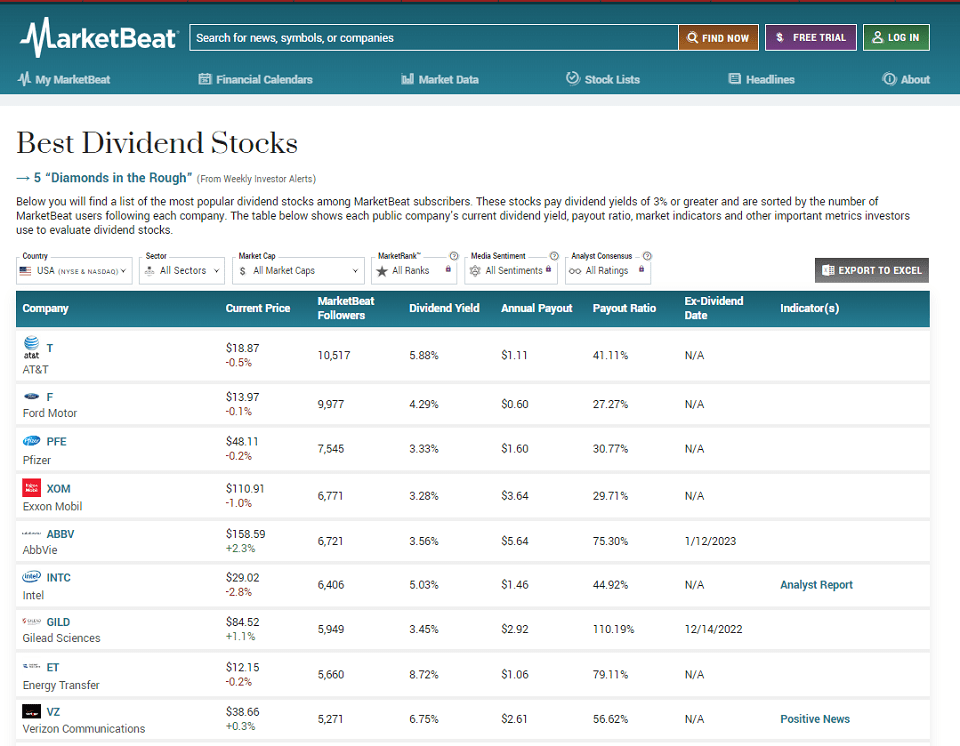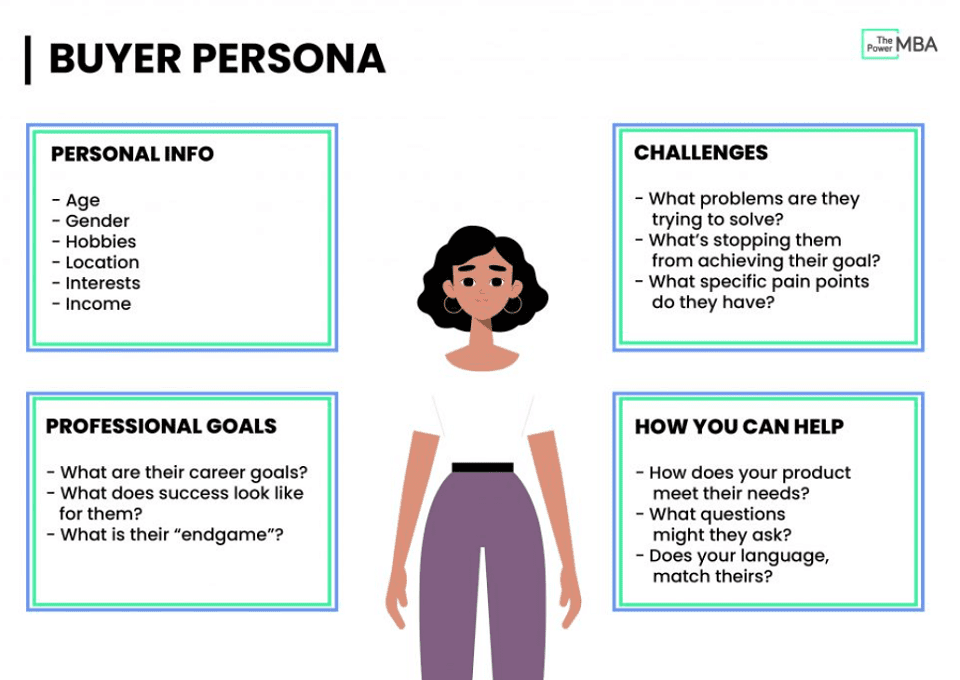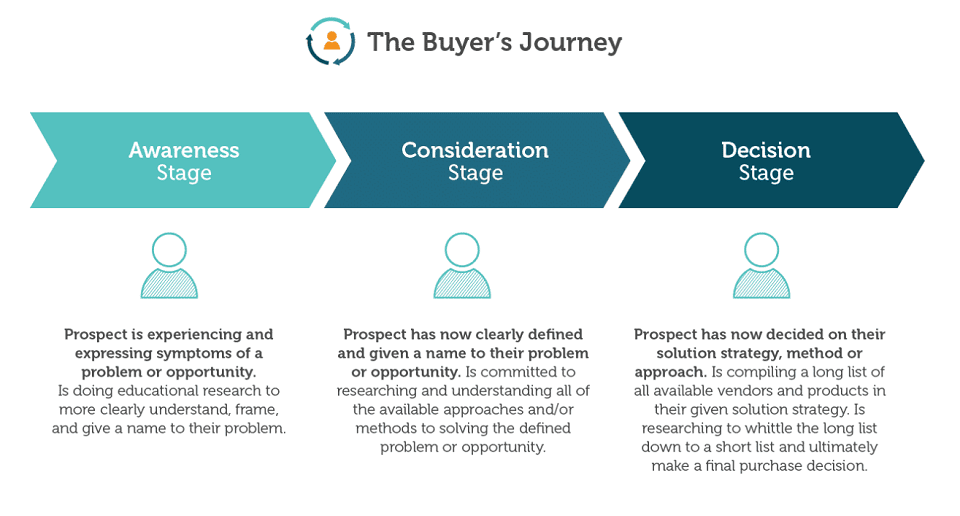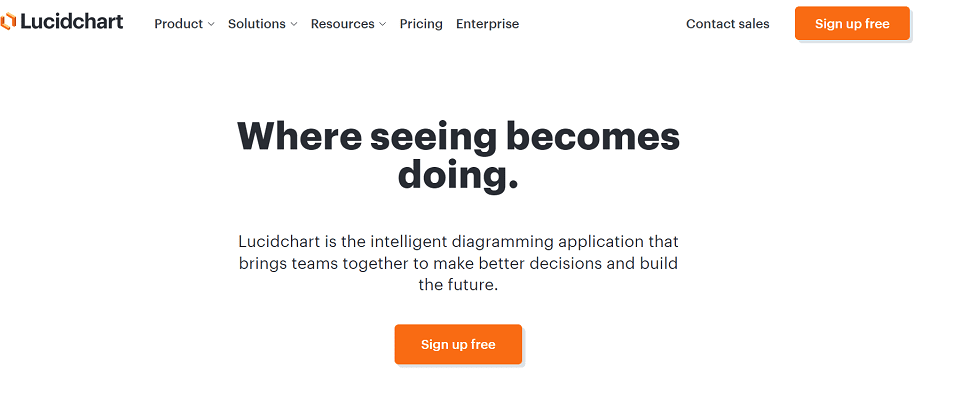As a business, if you find yourself marketing your product to the wrong audience, you might as well talk in an empty room. We are no longer in the era of broad, generalized content and marketing campaigns.
The key to taking your online business to the next level lies in knowing your audience.
By doing so, you can curate relevant and personalized content for them.
This will in turn enable you to nurture your prospects and cultivate a deeper understanding of them.
So, how do you do that? Two words: Content Mapping
Let’s get started and find out what it is and how it can do wonders for your online business.
What Is Content Mapping?
Content mapping is a strategic process that helps you offer relevant content to the right audience at the right time.
For example, you’d want to message differently to existing customers, fresh leads, or a prospective buyers.
Essentially, it’s a tool that allows you to effectively guide whoever visits your website throughout their customer journey, ensuring that they don’t get drowned in a sea of unrelated content.
For instance, look at what MarketBeat does:

If someone is looking to invest in the best dividend stocks, all the pertinent information is there on a specific page, including the list of companies and their current stock prices.
There’s even a guide you can read before making a decision.
But that’s it, there’s no content unrelated to dividend stocks. It doesn’t target other types of investors.
Personalized content replaces the one-size-fits-all approach.
This is done by examining the following factors:
I. Buyer Persona
A buyer persona is a representation of your ideal customer.
With a buyer persona in hand, you can understand your target audience better, and tailor your content based on their needs, pain points, demographics, and behavior.

As an example, let’s consider the paddle board brand, Gili.
Since it’s an outdoor product, the Buyer persona might look something like this:
Personal Info:
- Age: 18-35 years old
- Gender: male or female
- Hobbies: outdoor sports, water activities
- Location: Living near lakes and seas
- Interests: outdoor activities, water sports
- Income: $30,000 – $80,000 per year
Challenges:
- Need for portable and durable paddle boards
- Budget and availability
- Mobility of the board from home to sea or lake
You can then go on and finish answering all the questions posed for the buyer.
When done, you’ll have a better picture of who to target and what content to make.
II. Lifecycle Stages
This is the other half of content mapping besides the buyer persona.
Every customer moves at their own pace, so it’s crucial to know where they are in the buying process.
Using that data, you can present them with personalized content at each stage, ultimately resulting in a purchase.

Here are how I define the three lifecycle stages:
- Awareness: At this stage, the prospects have identified their concerns. They’re looking for the right services or products to help them meet their needs, leading them to your company.
- Consideration: This is when the prospect takes an interest in choosing your company’s product or services.
- Decision: This is the ultimate goal, to get them to reach the point when they decide to buy from you.
Understanding where they are in the lifecycle leads to improving their overall customer journey.
For instance, you’ll reduce the chances of scaring them away by not hard-selling at the first stage.
Keep every content item relevant to their needs and wants at every stage in this process. That’s the goal.
What Is Website Content Mapping?
Let’s take the concept of content mapping closer to home, and look at how it relates to your online business.
Website content planning grants you the chance to organize your website pages, blog posts, and even the offers you’re going to publish on your site.
Then, you’ll be able to segment each type of content based on the buyer personas you’ve created.
Not to mention, it’ll let you identify which website pages need to be shown at each lifecycle stage.
As an excellent example of this, take the website Medical Alert Buyers Guide:

After identifying the elderly as their main users and their target market to include them and their families, they’ve crafted content based on what concerns this audience most targeting each stage in the buyer’s journey.
That included finding the best alert system, how they can travel safely, and even a guide to protecting personal data for these vulnerable people.
The Importance of Content Mapping
Did you know that, without relevant content, marketing campaign response rates go down by 83%? Yes, you read that right.
Contextual relevance is a driving force in increasing engagement.
By having a solid content mapping strategy, your business will have a framework to better optimize your content creation.
The following is how content mapping can help you and your online business:
1. Identifies the Loopholes in Your Content Strategy
While creating your content map, you need to delve deeper into each stage of a buyer’s journey with your buyer persona as the focal point.
The organization, research, and visualization involved in content mapping should help you identify any loopholes in your content strategy.
As such, it helps you better align your company’s content strategy with a set of firm objectives.
And you’ll be able to fuel better engagements and conversions through the delivery of suitable content.
With content mapping, you or your marketers can find flaws through a series of audits.
This can include analyzing the performance of each piece of content you have produced or taking a closer look at buyer behavior.
The findings will enable you to adjust your strategy accordingly.
2. Provides A Better Understanding Of Your Customers
There’s no limit to understanding your customers, existing or otherwise.
You stand to learn more about your target audience during every visit or click to your website.
Through content mapping, you’ll have valuable insights by designing a defined path for your customers, all the way until they reach the decision stage.
You’ll learn more about their pain points and what solutions they’re seeking.
Moreover, these in-depth insights will let you deliver more compatible content.
Each piece of content at every stage of the lifecycle will seem more personal, almost like you’re talking directly to them and addressing their specific concerns.
This strategy enables you to ease visitors into their buying journey without scaring them off by overdoing everything.
Take note of this as you move forward with your content strategy: users of the product aren’t always your target market.
Sounds confusing?
Let’s take an excellent example, the kid’s mask brand called Green Supply.
While the main users are children, they aren’t the buying party.
So in reality, their parents or guardians are the target market.
3. Helps Build A Buyer Persona
Once you understand your target audience better, you can build a more accurate buyer persona rooted in reality.
Depending on your business model, you can create more than one buyer persona.
It’s normal to have more than one, especially if you’re targeting multiple industries.
However, if you’re new to the concept of buyer personas, it might be ideal to stick to one or two until you understand how to build them accurately.
For example, Estuary defines different target audience groups for its services: Business Leaders, Engineers, and IT Professionals.
They have different technical know-how like a Change Data Capture Guide targeting one or more audience groups within their niche. The end goal is for them to purchase.
4. Integrates Keyword Mapping
In crafting your content’s contextual relevance, you can integrate keyword mapping.
During this task, you’ll optimize each piece of content with your target keywords.
Of course, it requires time and research to know the specific set of keywords that your prospective buyers are using when addressing their needs, so they will find what you offer.
You can use keyword search tools to make it easier for you.
Identifying the right keywords is like finding the best Scrabble words. Both lead to better results.
5. Helps You Catalog Your Content
Not every piece of content is relevant, nor does it have to stay on your website.
Some blog posts simply never need to be uploaded.
To catalog your content, you should analyze every relevant detail, including the title, content category, and type.
To increase the chances of ushering prospects along to conversion, you should aim to keep the content fresh, updated, and engaging.
Also, you will be able to identify gaps or missed opportunities by reviewing your content.
It can even help you pinpoint the materials that may negatively affect your business, as well as ensure that no relevant content goes unused.
6. Saves Time and Resources
Instead of being all over the place and putting money everywhere, you can focus on your time, budget, and other resources in the right places when you employ content mapping as a standard practice.
There’s no room for irrelevant content, which only wastes space on your website.
Strategic content mapping is an excellent tool for creating and offering only pertinent content and concrete calls-to-action.
It takes all of the guesswork out of the conversation.
7. Improves Sales
Almost every company in the world has one end goal: Profit.
With content mapping, you will be able to more effectively guide your prospects toward the purchase funnel.
In other words, you’ll keep them better engaged until they become paying customers.
And by giving them relevant information at every stage along the way, you will make the entire experience more seamless.
As such, it can expedite their decision to purchase your product or service.
How To Create A Content Map
Now that you know what content mapping is and why it matters, let’s review how to create one.
A. Create A Buyer Persona
The first step that lays the foundation for your content map is the creation of your buyer persona.
To accurately represent your target audience, avoid generalizing, and focus on being as specific as possible.
There are a lot of factors to consider when doing this, including demographics (age, income, and location) and psychographics (motivations, interests, and concerns).
You’ll also need to consider their behavior, like what sources they use to research or what influences their purchasing decisions.
It takes a lot of time and research to build an effective buyer persona. By doing so, you’ll gain more insights as to how to approach them.
You can create content that’s compatible with their habits, behavior, and characteristics, which leads to meeting their needs and offering them a solution.
If you’ve been in business for a while, you can examine the purchasing patterns of your best clients, particularly those who are repeat customers.
You can ask yourself the following to help you in this step:
- Did your business solve their issues?
- What are the needs or qualities they share?
- What led them to choose you over other brands?
- What were the concerns / pains that led them to look for your products or services?
B. Map the Customer Journey
As mentioned, you have to develop targeted content based on each customer lifecycle stage (awareness, consideration, and decision).
To do that, you need to create a customer journey map that will usher visitors and prospects seamlessly through each phase until they’re ready to buy.
So, how do you create a customer journey map?
Analyze your existing customers’ behavior or read their feedback.
This will give you insights into their overall experience with your business.
Here are some points you can examine from your existing clientele:
- Actions: Track what your clients do after learning about you, such as browsing through your website.
- Motivations: Learn why they decided to move on to the next lifecycle stage and what made them consider your business.
- Touch Points: Find the platforms where your customers engage with your business. It could be your website or social media accounts.
- Obstacles: Know the challenges your customers face when dealing with your business. Was the content not clear? Did you present them with too much information, or not enough? You might even find an issue with the pricing. By learning, you could pinpoint the factors that might deter prospects from moving forward in the buyer’s journey / lifecycle.
- Opportunities: Examine the problems and create solutions to improve the customer experience.
By gaining deeper insights, you can improve your current content strategy and learn which types of content they find valuable.
And by enhancing the overall customer experience, you stand to boost your conversion rates.
C. Review Existing Content
Remember this phrase: Quality Over Quantity
Keep this mantra in mind while reviewing your existing content.
You need to decide which content items to keep, update, or remove.
Consequently, you can track whether your content aligns with your buyer personas and objectives.
To help with your review and analysis, ask yourself:
- Is the content generating traffic?
- Are you getting quality leads or prospects?
- How well are your SEO efforts working and reaching your target audience?
- Does your content clearly explain what you can do for your prospects?
These questions can help you stay on top of your content strategy.
It’s important to keep your content updated.
That way, when it does reach the right audience at the right time, you’ll stand a better chance that they will reach the decision stage.
D. Create Content Based On Each Stage of the Buyer’s Journey
Because the needs of prospects will vary depending on where they are in the lifecycle, you can use the content map to create suitable content for each stage.
For example, the content they need during the awareness phase is different from when they’re already ready to make a purchase decision.
For each stage of your prospects’ journey, you can use the content listed in the table below.
|
Awareness
|
Consideration
|
|
Decision
|
Post-Purchase
|
The type of content in the table are just some examples of what you could use to meet the demands, needs, and challenges of your prospects.
Personalize each piece of content you build to increase relevance and to help guide your prospects through the funnel.
E. Competitor Research
Do you want to stay ahead of the game?
While creating your content map, you can do research on your competitors.
There’s nothing wrong with looking at their content, as long as you don’t plagiarize.
You can analyze their content and see the dos and don’ts.
Learn from them, and you may just find out what works for your target market.
Not to mention, fresh ideas you get from competitive research can fuel your creative juices, helping you brainstorm more relevant topics and content types for your audience.
Content Mapping Tools
Some marketers find content mapping to be a daunting task. But worry not.
Here are some tools you can use to make content mapping organized and uncomplicated:
Lucidchart

Lucidchart is a great tool if you want a more visual approach to designing your content map.
Its flowchart maker is excellent to make your work more organized.
In addition to the mapping itself, you can connect your Lucidchart account to other platforms, making your content map process more seamless.
Google Docs

Due to its accessibility, this free word processor tool is fantastic, regardless of whether you’re working in a team or alone.
It has many features, including drawing or inserting diagrams into your document.
All of these can be used to create content maps.
Additionally, your work is always automatically saved when you’re online, so you don’t have to worry about losing progress when / if an application crashes.
Templates
The first two tools are both great, but if you’re looking for something more specialized and ready-to-use, it’s best to look for some strategic templates.
You can find different templates online, including the following types:
- Content Audit
- Buyer Persona
- Content Mapping
With the proper tools on hand, you are less likely to find content mapping to be a hassle.
Also, since templates make work easier, you can save plenty of time and resources without sacrificing quality and results.
Final Thoughts
Many mistakenly think that any content is good, hence, they don’t spend a lot of time and resources in creating an effective content strategy.
Have you thought the same way?
With the content mapping framework, you can visualize, organize, segment, and create content that’s relevant to your target audience.
You can meet your prospect’s needs and offer them a solution by creating suitable content based on the buyer persona and lifecycle / buyer’s journey stages.
Nurture your relationships and curate your content.
If you do it right, you’ll have a long line of loyal customers.
All images sourced by the author and attributed to original source via dofollow link credit.
Disclaimer: The views and opinions stated in this post are that of the author, and Return On Now may or may not agree with any or all of the commentary.
Burkhard Berger
Latest posts by Burkhard Berger (see all)
- Content Mapping Guide: 7 Reasons Every Online Business Needs One - December 1, 2022




